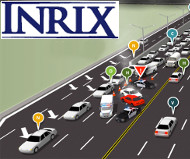2/18/2016
Report Shows Washington Toll Road Caused CongestionIndependent traffic survey finds high occupancy toll lanes in Washington state increased congestion in the general purpose lanes.

The failure of tolling to reduce congestion has become a political hot potato in Washington state. On Tuesday, Governor Jay Inslee (D) responded to an independent report that found the conversion of free lanes into high occupancy toll lanes on Interstate 405 has made commuting significantly more difficult.
"For many years, the I-405 corridor has been the most congested in the state," Inslee said. "We're almost six months into the two year launch of these lanes and the results are mixed."
Politicians often tout the imposition of tolls on freeways as a primary method of congestion reduction. For example, the Congressional Budget Office last week issued a report extolling the financial virtues of taxing motorists with transponders, but a study by the traffic monitoring firm Inrix shows that reality does not necessarily reflect political promises and expectations. Inrix data show just what happened after tolls were imposed on I-405 between Bellevue and Lynwood.
"The results of this preliminary analysis shows extended peak hour conditions for most segments in the peak direction of travel for those in the general purpose lanes," the report found. "Additionally, these segments also show slower speeds during the peak hour in the general purpose lanes... As such, this analysis suggests that post-toll speed improvements on I-405 are isolated to vehicles that already experience the least peak hour congestion (ie., those driving in the HOV/HOT lanes), while post-toll speeds in the general purpose lanes have generally degraded for the majority of drivers."
The Washington State Department of Transportation (WSDOT) set up the thirty-mile high occupancy toll (HOT) lane project on September 27, 2015. The Inrix analysis compared travel times for a typical Wednesday before the tolls were added to travel times after the tolls were in effect. The analysis did not consider the congestion effect on nearby secondary roads. WSDOT disputes the findings, but some lawmakers are listening.
"Who do you trust?" state Representative Mark Harmsworth (R-Mill Creek) tweeted. "The state that needs congestion to drive up tolls or an company that has nothing to gain?"
The Stop 405 Tolls website went further in questioning even the financial value of the tolling project. The site used WSDOT's latest financial report to calculate that it cost $2.5 million to run a toll road that generated a mere $5.2 million in revenue, reflecting overhead costs of 51 percent.
"In other words, we wasted $2.5 million just operating the toll system that isn't actually doing anything to improve traffic," the site explained.
Former Illinois Governor Rod R. Blagojevich (D) once touted the creation of high occupancy toll program called "Green Lanes," only later to be accused of trying to set them up in return for campaign cash from the industry. Blagojevich is currently serving time at a federal minimum security prison in Colorado until May 2024.
A copy of the study is available in a 500k PDF file at the source link below.


